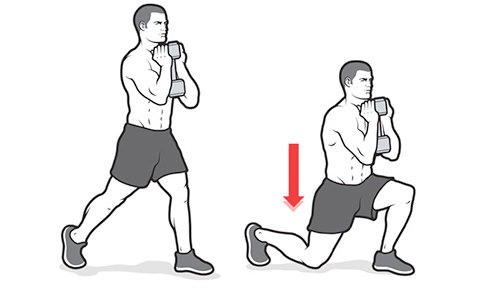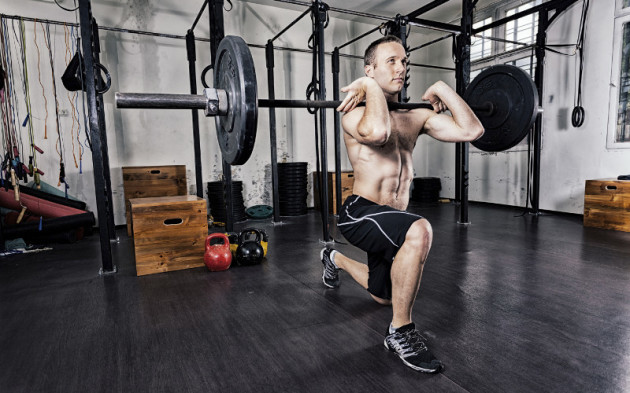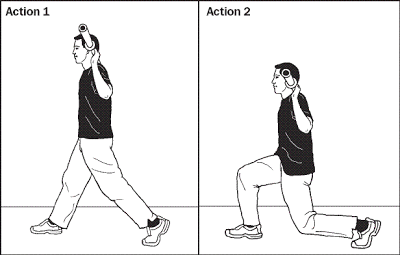SINCE MY LAST article focused a lot on the need to vary your movements and I spoke briefly about the idea of unilateral exercises I figured I would give you, my dear readers, the complete guide to putting your best foot forward and making some ‘gainz’ on it.
Unilateral exercises, why?
Everyone loves to squat and deadlift heavy, but there comes a time when you can only make so much progress by repeating the same pattern over and over. Doing more unilateral work will not only allow you to freshen up your training, but will also allow you to shift more weight (i.e. do more work) over a given time period due to the phenomenon known as the bilateral deficit (one to google).
More unilateral work also allows you to deload the smaller assistance muscles involved in squatting and deadlifting, so the risk of injury is dramatically decreased the more work you do in these exercises.
Split Stance or Single Leg
The majority of unilateral work will be done in split stance, i.e. both feet remain on the floor but one of them is doing a lot more work than the other, these are your typical split squats, lunges, etc.
A true single leg exercise is one that allows one limb to almost exclusively shut off and allow the entire workload to be done by the other, examples include step ups, single leg RDL’s, or single leg glute bridges. More often than not true single leg exercises recruit the posterior chain a little more than split stance exercises (owing to the nature of the reciprocal gait cycle that fires the contralateral glute when the hip flexes.)
Both are essential in any well rounded training program, but the true single leg work is a little more advanced than your typical split stance drill as the demands on balance and proprioception can be a little tricky without a fair bit of experience.
Getting Started – Half Kneeling
Before the majority of people can start to work on split stance exercises they must establish a solid base outside of their usual square stance wide base of support. For a lot of people, just getting into this position will be difficult. Many will complain about a feeling of intense stretching on their anterior hip, some will lack the balance to narrow their base of support, for some the 90 degree angle at the knee and hip will feel foreign because it will force their glutes into a stabilising role that they’re not ready for. In some cases just doing holding a weight in this position can be a perfect starting point.
After you’re happy that you can hold this position while engaging the core, glutes, and maintaining good posture you can progress on to a more dynamic variation of a half kneeling hold, for example throwing in an overhead press with a dumbbell or kettlebell, or a horizontal or diagonal rowing pattern with a cable or band.
Once you have mastered simple exercises in the saggital plane (straight up or down) you can start to challenge this position more by working into the frontal and transverse planes with variations of the pallof presses, as well as lifts and chops with a band or cable.
All of these options, while challenging from a motor learning standpoint, may not provide enough of a homeostatic disruption to warrant a place or prominence in a lower body training session, so it may be wise to incorporate them as filler exercises between heavier ones on upper body training days, or even, in the case of the overhead presses, as fillers between squats or deadlifts.
Moving On Up – Getting To Your Feet
Once you understand the correct alignment of feet, hips, and posture in the bottom position you can start to progress towards your feet.
This is literally a case of pressing your front foot into the floor to create movement, while you brace your core tight to maintain your posture, this is however a lot easier said than done.
Common mistakes such as lumbar spine arching often occur as the body struggles to keep the abs braced, there is also a tendency for those who are quad dominant to let their knees slide forward as they return to the ground, both of these are typical of Jands’s lower cross syndrome, and will result in the glutes and abs taking a holiday, the lower back erectors taking over, and the whole cycle perpetuating.
Below is a tutorial on how to correctly split squat:
Loading them Up
Once you’re able to perform the movement with bodyweight, you may wish to add a little load to make things a little more difficult on yourself. With all split squat variations you have a couple of basic loading strategies, which I’ll list in order of difficulty (from easy to hard)
Goblet
Suit Case (Two Dumbbells)
Anterior Loaded Barbell
Conventional Barbell Loading
If you want to get really fancy you can start to challenge your posture and positional awareness by applying an offset loading, meaning holding weight on one side of your body only in an attempt to disrupt your normal balance strategy.
As a miscellaneous note, having a safety squat bar makes life a whole lot easier when going unilateral:
Especially as it allows you to do things like this when balance isn’t quite up to par with strength:
How to regress, and how to progress
For some people this movement just WILL not be happening for a number of reasons
- Balance issues, use a TRX.
- Mobility Issues, elevate the rear knee:
- And for those who are looking to create additional difficulty for themselves, you can add a little range of motion:
- And finally, the daddy of all split squat exercises, removing a point of contact from the floor entirely, creating a defecit of proprioception, and balance as well as increasing demands on range of motion, the Bulgarian split squat:
As an aside; this is usually the LAST progression that I would use with most clients, as I find this to be far more advanced than any other lunge or split squat variation. All of the loading options apply to all of these variations, from goblet to barbell, and offset.
Getting Dynamic – Moving Forwards…or Backwards
If you can master the static split squat variations then chances are that lunge variations will be less challenging for you.
The basic progression I like to use with clients once they have mastered the above steps is to progress from static split squats firstly to reverse lunges (usually with goblet loading as an introduction to each of these progressions) :
If you have access to a makeshift slideboard, you can bridge the gap nicely between the split squat and the reverse lunge for someone who may not be ready to make the leap by losing a point of contact on the floor:
I would then move them on to walking lunges, as it introduces the idea of deceleration to them:
If this can be mastered easily, I would look to add complexity to the movement by progressing to the forward lunge, which keeps the deceleration component and also adds a change of direction:
As an aside again, I would not use certain loading strategies on a walking or a forward lunge, namely the anterior loaded barbell variation or use extremely heavy weights on a goblet variation, as the potential to drop the barbell/kettlebell/dumbbell may increase with a less than experienced trainee. All of the range of motion progressions/regressions also apply to lunge variations just as well as they do to split squats.
All of the same loading options also apply, however keep the continuum in mind that beginners generally start with goblet loading before progressing to suitcase, safety bar (if available), anterior barbell, and conventional barbell (and onwards to offset loading if variation is desired).
Once you know what you want to accomplish and what is suitable for your trainee you can start to dwindle down the many many options and select the right one for your particular phase of training. And now for what almost seems like an afterthought…
Single Leg Exercises
As mentioned previously, single leg work is a bit of an advancement forward from split stance, as for the majority of them you will have less points of contact on the floor to keep your proprioceptive centres fed with afferent data.
For the sake of brevity we’ll just cover the three main single leg exercises, in ascending order from easy to difficult.
Firstly single leg hip thrusts/glute bridges:
I would include these from the very start of any trainees program provided they are able to perform the movement, should they not be able to perform it the following regression may apply:
With our without weight this allows the trainee to use the power from both glutes to attain the starting position and then maintain that using the isometric strength of just one.
Should the trainee master the original version from the floor easily you have a number of variations available to you before you have to add load to the exercise, for example:
You can add an anti-rotational demand:
Or you can add ROM:
In a number of different ways:
Once you have mastered all of these you’re ready to start bridging the gap towards single leg exercises from a standing position:
Bridging the gap
This is a small tweak but it’s getting its own section as I’ve found it to be a game changer when it comes to teaching trainees to fire their glutes in single leg stance, the knee lift:
Ideally I would slow this motion down a little and “stick” the finishing stance a little more, but you get the idea.
Why does this work so well, simple, the principal of the reciprocal gait cycle which dictates that as you flex your left hip your right glute fires reflexively to maintain balance and drive locomotion.
This exercise takes advantage of that phenomenon to coax the glutes into firing a little more, which in turn can aid in the transition towards our next exercise…
Stepping Up
Step Ups are easy to perform, but difficult to master.
I will often include them early in a new trainees program as a later stage conditioning exercise as the learning curve is not so steep, but will look to refine the technique over time, especially if the goal is to add load or to increase time under tension to increase hypertrophy within the trainee.
To start things off, I would usually use a counterbalance or a resistance band to aid the trainee in achieving a controlled motion:
(Here a TRX is used, but you get the idea)
After this you can progress along the usual loading strategies from goblet, all the way up to barbell or safety bar variations. I would consider anterior loading the barbell not only safe for this, but my preferred method, as it keeps the load directly over the working leg which can only aid in the performance of this movement.
Again, as you progress upwards in the complexities of the different variations you will have loads of options open to you, including increasing ROM, offset loading, as well as throwing in the knee drive from the last lunge at the end of the motion.
And finally, our last exercise to cover is easily the most frustrating one to learn, seen by some as rocket science, of course it’s the single leg Romanian deadlift.
One Leg RDL’s
So these things, they are the absolute worst thing in the world to coach. There are about a million things that can do wrong, but here’s the most frequent things that I see:
- The trainee folds forward at the hip instead of raising the rear leg.
- The trainee rounds over at the back, again without lifting the rear leg.
- The trainee gets halfway down just by flexing at the hip then shoots the back leg up in an attempt to “catch up.” This knocks them off balance and they stop short of full ROM.
- The trainee falls over. Not fully, just enough to catch themselves and end the rep.
So with all of this in mind I find that it’s hard to learn this exercise via a video, but here goes anyways:
My usual go-tos when this doesn’t work out involves using a TRX to gain some stability, or a little proprioceptive feedback.
As an aside, I’ve personally found that practice makes perfect with this motion, so I like to throw this variation in during warmups:
But again, I must stress that this is something that you may need a coach to troubleshoot in person based on your own unique needs.
Wrapping up
I spent far too long writing this blog so I’ll keep the wrap up kinda brief, I hope you gained a bit of knowledge on how to properly progress your way through the complex world of unilateral exercises.
If you have any questions about anything that I’ve covered above please don’t hesitate to get in touch, and if you need a little help with any of the exercises outlined, or wish to have a chat about where to place them in your program you can always shoot me a message or come in for a session.
As I mentioned at the start of this blog unilateral work is essential within any well rounded training program, so if you’re not doing it presently I would implore you to start as prescribed in this blog, even if things seem a little remedial at first, as the benefits are MASSIVE.
Dean Merton is a Dublin-based strength coach and personal trainer. For more information you can follow him on Facebook and Instagram, or you can send him a direct message here.
You can also see some of his previous articles here.
Subscribe to The42 podcasts here:





